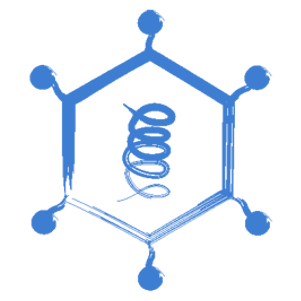Difference between revisions of "Category:Mycobacterium species"
(Created page with '{{review}} ===Overview=== *Mycobacterial infections are caused by bacteria belonging to the family Mycobacteriaceae, order Actinomycetales *Includes obligate pathogens, opport…') |
|||
| (8 intermediate revisions by 2 users not shown) | |||
| Line 1: | Line 1: | ||
| − | {{ | + | {{frontpage |
| + | |pagetitle =Mycobacterium species | ||
| + | |pagebody = *Mycobacteruim organisms belong to the family Mycobacteriaceae, order Actinomycetales. This class of organism includes obligate pathogens, opportunistic pathogens and saprophytes; they can cause chronic, progressive, granulomatous infections including tuberculosis, [[Johne's Disease|Johne's disease]] and feline leprosy. ''M. bovis'', ''M. tuberculosis'' and ''M. avium'' cause [[Respiratory Bacterial Infections - Pathology#Tuberculosis|tuberculosis of cattle]], [[Respiratory Bacterial Infections - Pathology#Tuberculosis in pigs|tuberculosis of pigs]] and [[Respiratory Bacterial Infections - Pathology#Tuberculosis in dogs|tuberculosis of dogs]] respectively. ''Mycobacterium leprae'' and ''M.lepraemurium'' cause human, feline/murine leprosy respectively. Localized opportunistic [[Bacterial skin infections - Pathology#Bacterial granulomatous dermatitis|skin]] and subcutaneous infection can be caused by saprophytic and rapidly growing atypical mycobacteria. | ||
| − | + | Environmental species are found in soil, vegetation and water. Mycobacterium organisms are | |
| + | non-motile, non-spore forming weakly Gram-positive acid-fast rods. They require egg-based media for growth, forming slow-growing (three weeks are required for culture) colonies that stain with carbol dyes and resist subsequent decolorization with inorganic acids; this characteristic which is due to the spatial arrangement of mycolic acids within the cell wall makes them acid fast. They are identified by Ziehl-Neelson staining and differentiated by culture, biochemical tests, chromatography and molecular techniques. | ||
| − | + | Mycobacterium species are resistant to disinfectants and environmental conditions, but are susceptible to pasteurisation. | |
| − | + | |contenttitle =Content | |
| − | + | |contentbody =<big><b> | |
| − | + | <categorytree mode=pages>Mycobacterium species</categorytree> | |
| − | + | </b></big> | |
| − | + | |logo =bugs-logo copy.png | |
| − | + | }} | |
| − | |||
| − | |||
| − | |||
| − | |||
| − | |||
| − | |||
| − | |||
| − | + | [[Category:Bacterial Organisms]] | |
| − | + | [[Category:Gram_positive_bacteria]] | |
| − | + | [[Category:Rods]] | |
| − | |||
| − | |||
| − | |||
| − | |||
| − | |||
| − | |||
| − | |||
| − | |||
| − | |||
| − | |||
| − | |||
| − | |||
| − | |||
| − | |||
| − | |||
| − | |||
| − | |||
| − | |||
| − | |||
| − | |||
| − | |||
| − | |||
| − | |||
| − | |||
| − | |||
| − | |||
| − | |||
| − | |||
| − | |||
| − | |||
| − | |||
| − | |||
| − | |||
| − | |||
| − | |||
| − | |||
| − | |||
| − | |||
| − | |||
| − | |||
| − | |||
| − | |||
| − | |||
| − | |||
| − | |||
| − | |||
| − | |||
| − | |||
| − | |||
| − | |||
| − | |||
| − | |||
| − | |||
| − | |||
| − | |||
| − | |||
| − | |||
| − | |||
| − | |||
| − | |||
| − | |||
| − | |||
| − | |||
| − | |||
| − | |||
| − | |||
| − | |||
| − | |||
| − | |||
| − | |||
| − | |||
| − | |||
| − | [[Category: | ||
Latest revision as of 18:55, 1 November 2010
*Mycobacteruim organisms belong to the family Mycobacteriaceae, order Actinomycetales. This class of organism includes obligate pathogens, opportunistic pathogens and saprophytes; they can cause chronic, progressive, granulomatous infections including tuberculosis, Johne's disease and feline leprosy. M. bovis, M. tuberculosis and M. avium cause tuberculosis of cattle, tuberculosis of pigs and tuberculosis of dogs respectively. Mycobacterium leprae and M.lepraemurium cause human, feline/murine leprosy respectively. Localized opportunistic skin and subcutaneous infection can be caused by saprophytic and rapidly growing atypical mycobacteria.
Environmental species are found in soil, vegetation and water. Mycobacterium organisms are non-motile, non-spore forming weakly Gram-positive acid-fast rods. They require egg-based media for growth, forming slow-growing (three weeks are required for culture) colonies that stain with carbol dyes and resist subsequent decolorization with inorganic acids; this characteristic which is due to the spatial arrangement of mycolic acids within the cell wall makes them acid fast. They are identified by Ziehl-Neelson staining and differentiated by culture, biochemical tests, chromatography and molecular techniques.
Mycobacterium species are resistant to disinfectants and environmental conditions, but are susceptible to pasteurisation.Pages in category "Mycobacterium species"
The following 4 pages are in this category, out of 4 total.
